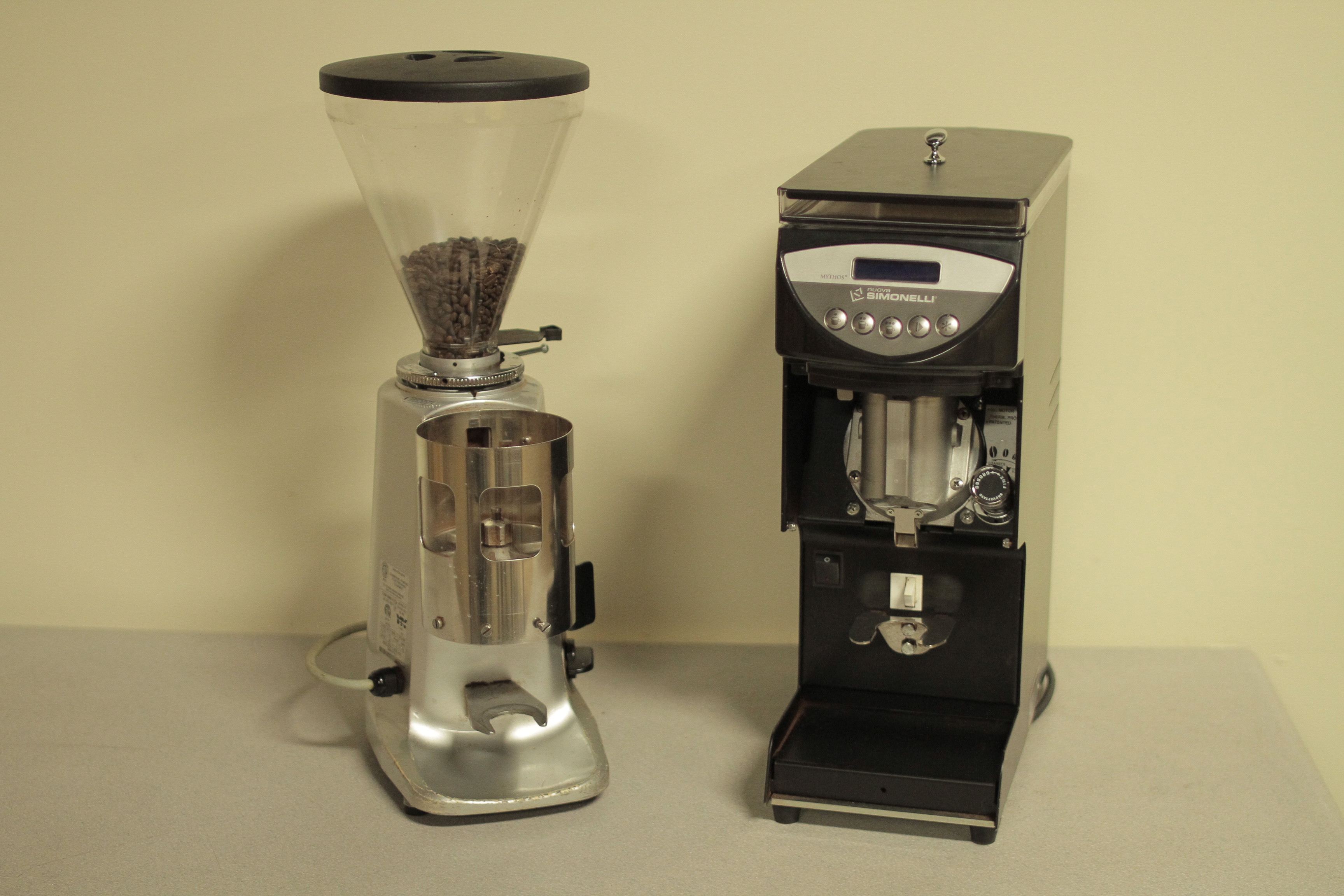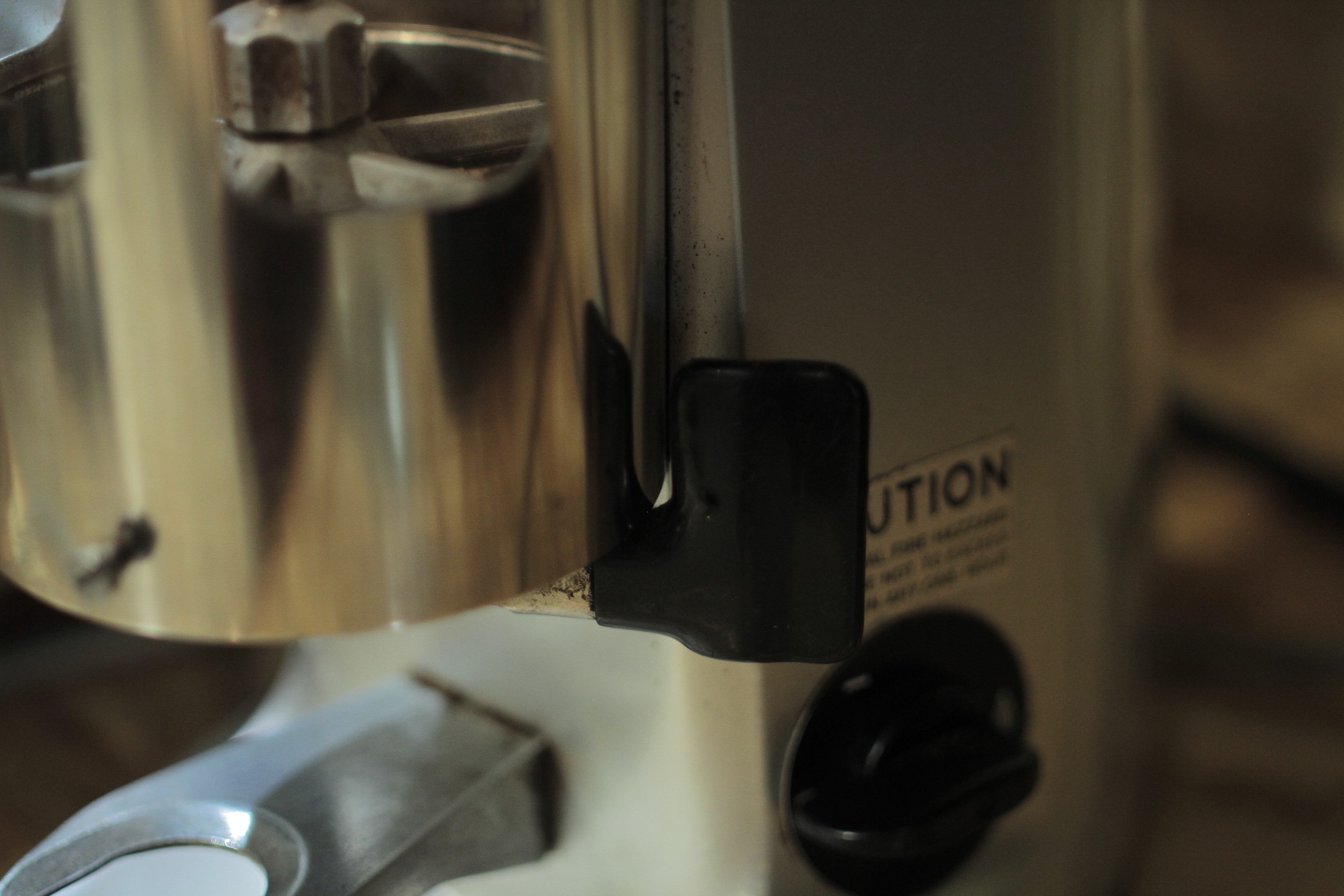Your source for coffee training
Sample Lesson 3: Introduction to Espresso Grinder
In our industry, there are two primary types of espresso grinders: those with a doser, and doserless. In this lesson, we will familiarize ourselves with the primary components of each. Espresso grinders are dedicated for espresso and are not used to prepare any other coffee in the coffee shop. It is truly the espresso grinder and machine that define the brewing method, not the level of roast or type of coffee.
Hopper – The hopper is a clear plastic holder that sits atop the grinder and stores fresh, whole bean espresso during the working hours at a coffee shop.
Bean Release Gate – The bean release gate allows the hopper to be removed while it’s full of coffee. During bar hours, the hopper should be kept full, and the bean release allows the barista to remove the hopper by stopping the flow of espresso beans. Look here if your grinder is on and nothing is happening.
Grinding Burrs – The beans then fall through the adjustment collar, into the grinding burrs. Grinding burrs are the series of blades either as discs or conical burr sets that evenly grind the espresso to our desired consistency.
Dosing Chamber – Once the coffee passes through the burrs, the ground coffee lands in the dosing chamber. Doserless grinders will dispense coffee directly into the portafilter. It is our technique and methodology that ground coffee is not stored in the dosing chamber, and we grind just enough for each order.
Dosing Lever – The dispensing handle on the side of the dosing chamber rotates the inside of the chamber and allows the coffee to drop into the portafilter.
On/Off Switch – Each make and model of grinder has it’s own configuration of on/off, typically a knob or switch near the bottom of the grinder. Some switches have a timer, but many simply engage the motor which spins the burrs, thus feeding coffee through and grinding the beans.

Adjustment Collar – Grind adjustment is controlled by a knob or a large collar called the adjustment collar. Turning the adjustment collar changes the distance between the grinding burrs which affects the size of coffee grounds that can pass through them. Nearly all grinders will allow you to adjust fine or coarse with arrows and words explaining which direction is which. The grinder burrs must be replaced regularly to retain sharpness, this schedule will be based upon volume.
The grinder is often referred to as the barista’s most important tool
It is essentially the first piece of equipment used in espresso preparation, and you only have one chance to grind whole bean espresso. A great barista is in tune with their grinder and understands how to make small fine adjustments to ensure consistency throughout the day as variables change around them. It is imperative to fully understand the workings of the espresso grinder from the inside out and to not be afraid to make confident adjustments when necessary.







